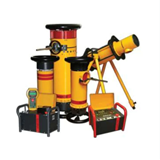First, here is the good news. According to most official and private sector sources, the world economic outlook is in its most healthy state for at least 30 years.
In a relatively unusual state of play, the global economy is firing an all cylinders and it has more cylinders to fire on thanks to the emerging economies. The global economy has achieved a growth rate above its three decade average for the past five years.
Brighter prospects in Europe and the end of Japanese deflation have helped add to the momentum that was already underway thanks to Asia, the Americas and the emerging economies such as the ‘BRICs’ (Brazil, Russia, India and China).
Overall, notwithstanding a major shock, the global economy’s growth phase is expected to continue. Consensus Forecasts expects the global economy to grow by between 3 and 4 per cent over the next three year period whilst the International Monetary Fund (IMF) has notes that the 2003-07 period experienced the fastest rate of growth in the world economy since the 1970s.
But here’s the bad news. World forecasts have been steadily down graded in the latter part of 2007 due to recent changes in US conditions. There are market jitters in the US due to the sub prime mortgage crisis and the credit crunch and the Federal Reserve’s monetary policy response.
Add to that the US twin deficits (the US federal budget and their current account), possible trade friction between the US and China and you have some national US domestic policy concerns that could quickly go global.
And that is just the known variables. There are also unknowns, or what legendary Australian economist Don Stammer called the ‘factor X’ external shock, such as a security-related incident, financial shock or a natural disaster related to climate change that could always potential affect the global economic environment.
The US – From the sub-prime to the ridiculous or The Odd Decoupling?
According to some economic commentators – such as Morgan Stanley Asia’s Stephen Roach - the US is forever blowing bubbles. Roach is concerned that the US consumer is asset-dependent that current consumer spending levels are unsustainable and that there will have to be a post-bubble adjustment in consumer spending just as there was in investment during the dot.com recession.
The US economy has also come under scrutiny not just because of fiscal and current account imbalances – the so-called ‘twin deficits’ - although other commentators believe that, notwithstanding the housing sector, the real fundamentals of the US economy are reasonably sound.
Furthermore, they argue that the strength elsewhere in the global economy will minimise any major adverse impact globally of a bearish US. Whilst some commentators believe that Asia has effectively ‘de-coupled’ from the US, partly because if the strength of intra-Asian trade, Roach believes that the American consumer’s dependence on Chinese exports means that Asia will not be immune if the US faces a sharp downturn.
North East Asia – China’s charging ahead but Japan still steady-state
The strength and sustainability of China’s growth continues to surprise commentators. Consensus Forecasts expects China to grow by 11.4 per cent in 2007 with 10.5 per cent in 2008.
The IMF too is expecting China to maintain a growth rate in the 9-10 per cent range. China’s industrial expansion has brought about unprecedented demand for Australian commodity exports, which have at times struggled to keep up in terms of supply due to capacity issues.
At the same time, China’s own export performance (exports have grown at an annual average of 20 per cent since 2001) has enabled prices to fall worldwide and has reduced inflationary influences in the global economy.
With falling prices of imported goods, together with record high commodity export prices (fuelled by Chinese growth) has enabled Australia’s terms of trade to be at its highest level in 30 years.
However, China’s large trade surplus with the US has led to a resurgence of protectionist measures – such as countervailing duties – and Washington has put pressure on China to revalue the Yuan.
Beijing is expected to gradually revalue the currency through a managed regime but will take into account capital flows and the impact of its large foreign reserves (US$1.3 trillion) on monetary policy.
Japan’s economic growth forecasts are still modest with 1.8 per cent growth expected in 2007 and 1.5 per cent in 2008. Consumer prices are flat whilst unemployment hover just under 4 per cent.
An important factor in Japan’s prospects will occur on the microeconomic side of the equation. Most commentators hope that under new Prime Minister Fukuda, there will be a willingness by the LDP Government to continue the Koizumi reforms particularly in opening up the Japanese services sector in areas such as healthcare, aged care education and recreation and lifestyle (‘well being’) where Australian services exporters have a competitive advantage.
South Korea’s strengths in information technology and communications are helping its growth projections although its recent free trade agreement with the US has highlighted structural reform issues in traditional sectors such as agriculture. South Korea’s economic growth is expected to be just under 5 per cent in both 2007 and 2008, although this may soften if the US economy weakens given South Korea’s strong trade links with Washington.
South East Asia, South Asia and the Pacific – India and ASEAN adding momentum
India has been a major economic growth story of the 2000s, with rates of growth approaching China and the Asian Tigers. Australia has been a key beneficiary of the Indian resurgence, as our exports to India have been growing at an annual average rate of growth of almost 29 per cent (compared to China at almost 23 per cent). However, inflationary pressures and infrastructure deficiencies have caused economic commentators to be cautious about India medium terms prospects. Consensus Forecasts expects India to grow by 8.6 per cent in 2007 and 8.1 per cent in 2008.
The Association of South East Asian Nations (ASEAN) economies will continue to take advantage of strong flows of intra-Asian trade and investment through bilateral and regional trade pacts (including one with Australia and New Zealand) whilst security concerns will need to be watched in both South East Asia and the Pacific. South East Asia as a whole is expected to achieve growth rates in the 5 to 6 per cent range over 2007 and 2008.
Australia’s strong economic performance is helping New Zealand and regional business links are still bullish within the Pacific region. New Zealand anticipates a growth rate in the 2 to 3 per cent range – around a one percentage point less than Australia’s – over 2007 and 2008.
Eurovision replaces Europhobia
After years of disappointment on the growth front, the European Union (EU) economic climate has improved. Western Europe is expected to stay in the 2-3 per cent growth range whilst Eastern Europe – including the new EU states – is expected to grow by between 5.5 per cent and 6.5 per cent over the next three years.
The complications revolving around expansion, European Monetary Union and the European constitution have made the job difficult in Europe and the ascendancy of China (the EU has contributed more to Chinese export growth than the USA in this decade) have created trade tensions.
However, Germany’s economic outlook has improved and UK and Ireland have been leading the way in terms of innovation and global economic integration. According to Consensus Forecasts, Germany is expected to out grow the USA in 2007 and possibly in 2008 too. However, economic growth in Italy and France is still sluggish and the EU faces major challenges with the accession of Turkey to the EU membership.
I like to be in (Latin) America…….
In Latin America, Consensus Forecasts expects growth to remain in the 4 to 5 per cent range with the IMF expecting a strong outlook as the most countries consolidate their macroeconomic frameworks.
Brazil’s economic growth rate is slightly higher that that of the US, Argentina has rebounded from its crisis and Chile’s status as the Latin America ‘Jaguar’ of the region (the equivalent of the Asian Tiger) will attract further interest from Australia – via a Chile-Australia free trade agreement – and the rest of the Asia Pacific.
Mexico has had its growth rate downgraded and is closely watching events north of the border with plenty of the skin in the game as the US accounts for nearly 85 per cent of all Mexican exports.
Building a ‘BRIC wall’ – the rise of the emerging markets
The rise of the ‘emerging markets’ has been a major driver of global economic growth in the 2000s. Whilst Goldman Sachs economists famously predicted the rise of the ‘BRICs’ - Brazil and Russia to India and China – many other regions such as the Middle East, Latin America, the former eastern bloc economies and even Africa now are playing an important role on the world stage.
Australia is well placed to take advantage of the rise and rise of the emerging economies as we supply 17 per cent of our merchandise exports and 10 per cent of our services exports to the BRIC economies alone.
A big question mark always remains over institutional reform – that is, will the economies provide sufficient transparency, stability, rule of law and sound corporate governance to function effectively and consistently to maintain current growth rates. Security and geo-political risks are also paramount in many of the emerging economies. While there are always dangers in extrapolating current trends, there is evidence to suggest that these economies are contributing significant demand and supply influences in the global economy.
Australia – Taking a walk on the supply side
Australia is now in its 17th year of continuous economic expansion with strong indicators including health economic of growth rates in the 3 to 4 per cent range, the lowest unemployment rate in 30 years, high commodity export prices and the highest terms of trade – the price of exports as a ratio of the price of imports – since the mid-1950s.
However, there have been some concerns for exporters on the supply side of the economy in terms of the drought, capacity constraints as well as having to deal with a strong exchange rate.
The drought’s impact on agricultural exports has been felt strongly because large proportions of agricultural land have not had time to recover from the 2002 drought.
However, the overall efficiency of the agricultural sector due to productivity gains made in the past two decades along with the fact that agriculture only contributes 3 per cent of GDP means the impact on the overall economy has been minimal. However, a breakthrough in agricultural trade reform in the Doha round of multilateral trade negotiations would greatly enhance Australia’s rural export prospects.
Capacity constraints – especially in transport infrastructure – have dominated the public debate on exports particularly in the resource sector. The unprecedented demand for Australian resource exports from China and the rest of Asia have led to supply being unable to keep up with demand.
However new investment in resources projects and related infrastructure are still to make their way in to the resource export data (the lag between investment and export volumes is estimated to taken up to 5 years based on past experience). In addition, capacity constraints in manufacturing sector and economy-wide labour shortage were also considered to be important supply-side issues according to the DHL Export Barometer which tracts exporter sentiment.
Overcoming the infrastructure deficit as well as the skills deficit will be important steps in achieving an export revival in Australia. Therefore increased reform in education and training on the supply side of the labour market will particularly assist the exporter community. In short, Australia needs an education revolution to have an export revolution.
I’ve been to Bali too - climate change takes on a trade dimension
All eyes were on Bali for the UN climate change negotiations. As a major fossil fuels producer and exporter, Australia needs to be wary of protectionist sentiments being revived under the cloak of environmental concerns but Bali showed what an important role Australia could play in bringing the US and developing countries together on environmental issues.
Australia has been also well served by the strong leadership shown in the coal industry - by both corporate leaders and the mining division of the CFMEU – to make sure that the industry prepares itself for an environmentally sustainable future.
Australia’s clean energy capability was identified in The Stern Report as having great potential to help developing nations like China and India reduce their emissions and we have already seen signs of that in the lead up to the Beijing Olympics with the export of environmentally friendly architecture, design and technology to China.
Conclusion – Reasons to be cheerful….. but watchful.
In conclusion, Australia’s global economic prospects are in good shape given the continued rise of China and India in the emerging markets and Europe and Asia picking up in the developed world.
Australia’s own capacities as a strongly performing reform-minded economy will also help although investment in education and training, infrastructure and other productivity-enhancing reforms will help exporters and other globally-minded Australian enterprises.
However, Australia does need to be aware of external shocks – particularly emanating from the US - that could adversely affect the global trading system. In addition, Australia needs to be mindful of the trade impacts of climate change but should also harness our capacities in environmental technologies given the expansion of business opportunities that will emerge particularly in China and India and other emerging markets.
The emphasis on an education revolution at home, however, will potentially bring great benefits to the Australian exporter community and will help boost Australia’s productivity performance and raise living standards for all Australians.



-160x160-state_article-rel-cat.png)


-160x160-state_article-rel-cat.png)





-160x160-state_article-rel-cat.png)
-160x160-state_article-rel-cat.png)






-160x160-state_article-rel-cat.png)

